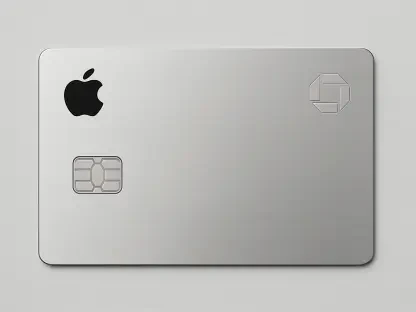The increasing adoption of card payment systems in the UK taxi industry has revolutionized how drivers earn, manage cash flow, and strategize for profitability in their operations. The introduction of these systems has brought about a shift in transaction processing that requires understanding several key variables. Drivers are now keenly aware of how fees, payout speeds, hardware reliability, and regulatory compliance affect their net earnings. As more passengers opt for digital payments over cash, integrating these systems has become essential for modern taxi businesses. However, this transition isn’t devoid of challenges. At the crux of these challenges are often the intricate and opaque fee structures imposed by payment providers. The choice between specialist systems targeted at taxi drivers and mainstream payment options offers varied cost implications. Understanding these dynamics is crucial for drivers navigating the financial landscape shaped by the digital payment shift.
Fee Structures and Their Impact
In the realm of card payment systems utilized by UK taxi drivers, understanding the fee structures imposed by payment providers is crucial. Specialist systems such as CabCard typically present lower percentage fees, ranging from 1.5% to 2.0%, appealing to drivers seeking competitive rates. These lower percentage fees may offer an advantage over mainstream options like Zettle, which tend to favor flat rate fees that offer simplicity but potentially higher costs. However, the fee landscape is complex and diverse. Notably, when processing payments involving premium, corporate, or foreign-issued cards, fees can escalate significantly, sometimes exceeding the 2.5% to 2.9% range. The higher fees can quickly erode the profits of drivers, making it imperative for them to comprehensively evaluate their payment system options. Beyond standard transaction fees, drivers must also consider factors such as payout speeds. These can vary from next-day settlements to delays spanning multiple days, affecting a driver’s ability to maintain liquidity and meet daily operational costs. Ensuring a financial cushion or seeking systems with faster settlement times may prove vital in preserving the driver’s cash flow.
Drivers must also bear in mind the diverse hidden costs inherent in these systems. Fees for services like annual maintenance can exceed £1,000, impacting their profitability. Additionally, specialist contracts might entail additional costs related to setup, rental, and eventual exit fees. Delving into the fine print of these agreements is necessary to avoid unexpected financial burdens. Many drivers have found it beneficial to strategically weigh the trade-offs between different fee structures, especially those who operate under pressing constraints. While specialist providers tend to offer lower transaction rates, they may come with other commitments. Vigilantly assessing these terms can help drivers optimize their earnings, striking a balance between minimizing costs and securing reliable service. Feedback from fellow drivers about their experiences with various payment systems also serves as a valuable resource. Singular focus on transaction percentages without considering associated costs and stipulations can lead to suboptimal choices. Ultimately, drivers must remain vigilant and adaptive, recognizing that the cumulative impact of transaction fees, payout strategies, and contractual terms significantly shapes their overall income.
Hardware and Compliance Considerations
Equipping their vehicles with the appropriate hardware systems remains an essential aspect for UK taxi drivers adopting card payment systems. In London, meeting Transport for London’s (TfL) regulatory requirements is imperative. Only TfL-approved devices like Ingenico/Miura options or POS tablets may be utilized. These secure and integrated systems ensure compliance, thereby avoiding potential penalties. Compliance not only assures seamless processing of transactions but also strengthens customer trust in using card systems. While these approved options might bear potentially higher initial setup costs, they guarantee adherence to mandatory safety and quality standards critical in competitive metropolitan areas like London. Furthermore, in cities with less stringent regulations, drivers might find consideration of alternate hardware setups appealing, though these must equally be scrutinized for potential connectivity issues.
Another significant aspect impacting driver profitability is connectivity reliability. Many drivers have adopted systems that rely on Bluetooth connectivity for their operations due to their affordability. However, Bluetooth-reliant systems might face connectivity challenges in areas with poor signal reception. These issues can result in system downtimes or failed transactions, impacting customer satisfaction and overall revenue. Considering these factors is essential, especially when unreliable connections could deny business. Exploring system solutions that offer strong network coverage and seamless integration with existing infrastructure is vital. It becomes evident that evaluating hardware choices involves assessing both technological effectiveness and compliance requirements. For drivers seeking to enhance their financial stakes through card systems, understanding how hardware selection influences operations remains a key determinant of success.
Enhancing Earnings Through Strategic Choices
For UK taxi drivers, the path to maximizing earnings amidst the intricate web of card payment system dynamics demands strategic decision-making. Evaluating the comparative advantages of varied payment platforms and hardware configurations is central to optimizing cash flow and profits. It is crucial to go beyond immediate transaction costs and deliberate on the long-term implications of payout frequencies, hardware fidelity, and contract obligations. Grounded awareness and real-life feedback from fellow drivers can provide practical insights into which systems work best under specific circumstances. Peer insights into various systems and experiences shed light on hidden aspects that may sway decisions, offering perspectives otherwise overlooked.
The significance of compliance, particularly for London taxi drivers adhering to TfL mandates, underscores the necessity of selecting systems that align with regulated standards. Opting for compliant hardware not only precludes financial penalties but also ensures customers a reassuring payment experience. As drivers lean on card systems to keep pace with evolving customer preferences, attention to auxiliary fees and terms fine-tunes their earnings strategy. Informed considerations should extend to the myriad fees linked to rental and installation processes, all overlapping into the broader context of contract life-cycles. Drivers capable of identifying these subtle financial leaks can unlock hidden avenues of profitability, thereby securing sustainable returns in a progressively technology-driven industry landscape. Ultimately, strategic configurations performed on a continuing basis are what empower UK taxi drivers to navigate the complex remuneration pathways dictated by card payment systems. By equipping themselves with knowledge, adaptability, and a prudent approach, drivers can potentially transform these systems into catalysts for economic growth and stability.
Navigating a Payment-Driven Future
In the domain of card payment systems used by UK taxi drivers, grasping the fee structures set by payment providers is key. Specialist systems like CabCard often offer lower percentage fees, between 1.5% and 2.0%, attracting drivers looking for affordable rates. In contrast, mainstream options such as Zettle typically opt for flat rate fees, which provide simplicity yet can be costlier. The fees can be quite multifaceted; for premium, corporate, or foreign cards, fees might spike, surpassing 2.5% to 2.9%, which can quickly trim a driver’s profits. Therefore, evaluating their payment system choices is crucial for drivers. Apart from fee rates, factors like payout speeds are significant. Settlement times can vary, affecting liquidity and covering daily costs. Hidden costs like annual maintenance and setup fees, sometimes over £1,000, can affect profitability. Weighing different fee structures thoughtfully is essential. Drivers must focus not just on transaction percentages but also on the overall costs and terms, which impact their net income.









